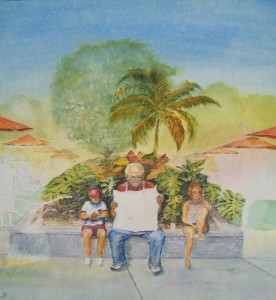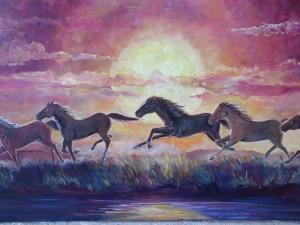
For many realistic painters, there is a tendency to harness artistic freedom. They tend to feel lost when attempting to work freely with no drawing, no preparation, and only a vague idea of what kind of composition they’re after, what light source they will establish, and so forth. How will their design work? Should something be added or removed? These are just a few questions they anxiously ask, assuming the definition of freedom means no control, and no control means disaster. But without freedom, where is the fun?
How does one keep their freedom, and still take control of their painting? Taking control means answering all the questions of drawing, value, design, composition. In other words, determining all the elements of painting before beginning.

There is a way for a realistic artist to still have control of their work while keeping their total freedom, allowing them to retain their composition, drawing, and realism. Remember, chance will favor the prepared mind. The better we prepare before we begin our painting, the faster and more freely we can work.
We’ve all heard that a tight drawing makes for a tight painting. Is this really true? I tend to think not necessarily so. I find if I plan ahead, by the time paint is on canvas, board or paper, I can work outward, free and loose. The details are in the planning; therefore, there is little concern for losing realism.
